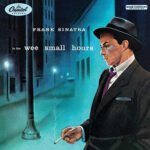If you were immersed in the world of 1970s rock, as many were, the chances are high that you encountered Led Zeppelin’s iconic concert film, “The Song Remains The Same.” This cinematic piece captured their electrifying 1973 performance at Madison Square Garden, gracing theaters throughout the late 70s and beyond. For fans, it was more than just a movie; it was a cultural phenomenon, an almost instant cult classic that brought the legendary Led Zeppelin to life on the big screen.
For many, including singer-songwriter Mark Kozelek of Sun Kil Moon, “The Song Remains the Same” was a formative experience. Decades later, the film’s impact reverberates, not just as a memory of youthful fandom, but as a touchstone for exploring themes of time, memory, and the enduring power of art. Kozelek’s personal connection to the film runs deep, inspiring not only a song, aptly titled “I Watched the Film ‘The Song Remains The Same’,” but also a broader reflection on life’s persistent echoes.
Like countless others, Kozelek’s first encounter with “The Song Remains the Same” was a quintessential 70s experience – at a mall cinema in Canton, Ohio. Years later, revisiting the film in his San Francisco apartment, he found himself struck by the enduring resonance of certain scenes. Jimmy Page’s hurdy-gurdy interlude by the lake and John Paul Jones’ dream sequence during “No Quarter” still held the same captivating power they did in his youth. This realization sparked a profound thought: even as years pass and life evolves, core aspects of ourselves, and the art that moves us, remain unchanged. This sentiment perfectly encapsulates the essence of “the song remains the same,” a phrase that speaks to continuity amidst change.
This enduring impression led Kozelek to channel his experience into his music. His song, “I Watched the Film ‘The Song Remains The Same’,” from the Sun Kil Moon album “Benji,” is more than just a tribute to Led Zeppelin. It’s a lyrical journey that begins with the film and spirals outwards, encompassing a tapestry of personal memories and reflections. This song, much like the film that inspired it, becomes a vehicle for exploring the persistence of memory and emotion over time.
The lyrics delve into deeply personal territory, weaving together the exhilaration of discovering Led Zeppelin with the poignant memory of his grandmother’s passing from lung cancer in 1976. He recalls the emotional turmoil of that time, a stark contrast to the escapism offered by rock and roll. This juxtaposition highlights a central theme in Kozelek’s work: the interplay between joy and sorrow, and how art can serve as a lens through which we process life’s complexities. The song becomes a space where “the song remains the same” in its emotional core, even as life’s verses change.
Further enriching the song’s narrative are references to significant figures in Kozelek’s life. Ivo Watts-Russell, the founder of 4AD Records, who gave Red House Painters their start, appears as a figure of gratitude and respect, dispelling rumors of past rifts. The inclusion of Chris Waller, a childhood friend lost too young, adds another layer of melancholic reflection. Waller, remembered for his Bon Scott impersonations, embodies the bittersweet nostalgia for lost youth and friendships. Even a seemingly minor, regretful childhood incident – a playground sucker punch – finds its place in the lyrical tapestry, showcasing Kozelek’s willingness to confront and integrate even uncomfortable memories.
The structure of “I Watched the Film ‘The Song Remains The Same’” mirrors the film’s own blend of concert footage, fantasy sequences, and backstage glimpses. Kozelek’s song similarly drifts between different realities – memory, imagination, and present reflection – always returning to the central motif of music and its evocative power. This mirroring of form and content reinforces the idea that “the song remains the same” not just as a film title, but as a principle of artistic construction and thematic coherence.
Melancholia emerges as a key emotional thread throughout the song and Kozelek’s broader work. He describes it not as clinical depression, but as a persistent “unspecific sadness,” rooted in early life experiences. This melancholic undercurrent, he suggests, explains his preference for Led Zeppelin’s acoustic “Rain Song” over the harder “Rock ‘N’ Roll,” or Black Sabbath’s ballad “Changes” over “Iron Man.” This preference reveals a sensibility drawn to emotional depth and introspection, qualities that resonate strongly with the themes of “the song remains the same.”
Musically, the track evokes the gentle, introspective moods of artists like Judy Collins and Van Morrison. Its unhurried pace and loose rhythmic structure, challenging for even seasoned musicians like Steve Shelley of Sonic Youth and Owen Ashworth of Advance Base, contribute to its unique atmosphere. The nylon string guitar, intended for a 6/8 time signature but ultimately defying strict categorization, mirrors the song’s lyrical fluidity and emotional openness. Even backing vocalist Keta Bill’s emotional reaction to the song’s sadness underscores its profound emotional impact.
In conclusion, both Led Zeppelin’s “The Song Remains the Same” and Mark Kozelek’s song inspired by it, are explorations of enduring themes. Kozelek’s “I Watched the Film ‘The Song Remains The Same’” serves as a heartfelt thank-you to his inspirations and a poignant reflection on memory, loss, and the persistent undercurrent of melancholia that shapes our lives and art. Ultimately, both works suggest that while life is in constant flux, certain songs, certain films, and certain emotions, indeed, remain the same, echoing through time and shaping who we are.

